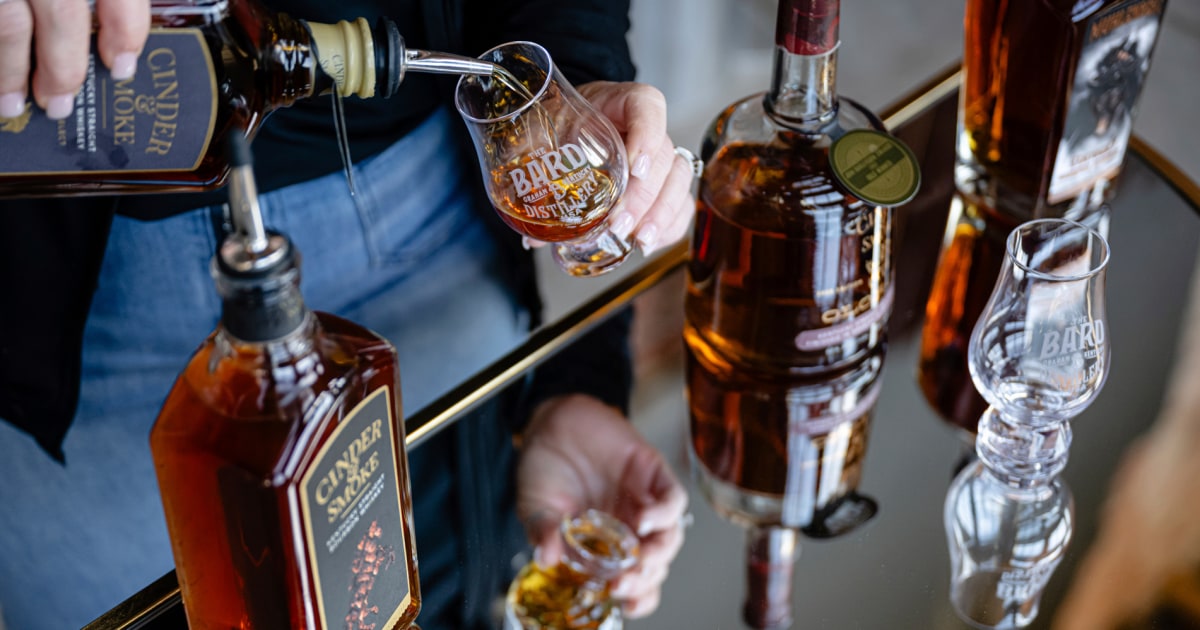Tensions Rise: How the U.S.-Canada Trade War Is Impacting the Bourbon Industry
The ongoing trade conflict between the United States and Canada is casting a shadow over the bourbon industry, raising concerns for producers and consumers alike. Tariffs and trade barriers are evolving, and as these tensions rise, the future of this iconic American spirit hangs in the balance. The bourbon industry, deeply rooted in American culture, faces a complex web of challenges that could redefine its landscape.
Understanding the Trade Dynamics
Trade relations between the U.S. and Canada have historically been robust, with both nations benefiting from cross-border commerce. However, the emergence of tariffs—particularly on steel and aluminum—has spilled over into various sectors, including the spirits industry. The bourbon industry, which relies heavily on both domestic and international markets, is now navigating a precarious situation.
Impact of Tariffs on Bourbon Exports
The imposition of tariffs can have immediate and far-reaching effects on the bourbon industry. For instance, when Canada responded to U.S. tariffs by placing levies on American whiskey, bourbon producers found themselves in a difficult position. The tariffs led to:
- Increased Costs: Producers faced higher costs for exporting their goods, which could lead to increased prices for consumers.
- Market Access Issues: Canadian consumers, who have shown a growing interest in American bourbon, may turn to local or international alternatives if prices rise.
- Brand Loyalty Challenges: Long-established brands might struggle to maintain market share in Canada as consumers explore other options.
As these tariffs persist, the question remains: how will the bourbon industry adapt to this changing environment?
Consumer Reactions and Market Shifts
Consumer preferences are shifting as a result of the trade war. The uncertainty surrounding tariffs has led to a more cautious approach among Canadian consumers. Many are reevaluating their purchasing habits, which could spell trouble for U.S. bourbon brands. Some key trends emerging from this situation include:
- Increased Interest in Canadian Spirits: With U.S. bourbons becoming more expensive, many Canadian consumers are turning to domestic brands, which could potentially lead to a resurgence of Canadian whisky.
- Emergence of Alternative Spirits: The trade war has opened the door for other spirits, such as rum and vodka, to gain market share in Canada, as consumers explore alternatives to bourbon.
- Promotion of Local Products: Canadian distilleries are capitalizing on the situation by promoting their products. This could lead to a long-term shift in consumer preferences.
The Bourbon Industry’s Response
In light of these challenges, the bourbon industry is not sitting idly by. Producers are taking proactive measures to mitigate the impact of the trade war. Some of these strategies include:
- Diversifying Markets: Many distilleries are looking beyond Canada to expand their reach. Emerging markets in Asia and Europe present new opportunities for growth.
- Innovating Products: Some brands are developing new expressions or limited editions that can command higher prices and attract a niche audience willing to pay for exclusivity.
- Strengthening Brand Loyalty: Distilleries are focusing on building relationships with their customers through engagement and storytelling, making their brands more resilient in a competitive market.
Looking Ahead: What the Future Holds
The future of the bourbon industry amidst rising U.S.-Canada trade tensions is uncertain. However, several factors may influence the trajectory of the industry:
- Political Climate: Changes in political leadership or trade agreements could lead to a resolution of current tensions, potentially easing tariffs.
- Consumer Trends: As consumers become more educated about spirits, their preferences may continue to evolve, affecting the demand for bourbon.
- Global Events: Factors such as economic downturns or global crises can shift consumer spending and influence the overall market environment.
Despite these challenges, the bourbon industry has shown remarkable resilience over the years. Its deep-rooted traditions, coupled with a spirit of innovation, could pave the way for a bright future even in the face of adversity.
Conclusion
As tensions rise between the U.S. and Canada, the bourbon industry stands at a crossroads. The impacts of tariffs and trade barriers are reshaping the landscape, forcing producers and consumers alike to adapt. While challenges abound, the industry’s history of resilience and innovation offers a glimmer of hope. By diversifying markets, promoting brand loyalty, and responding to shifting consumer preferences, the bourbon industry may not only weather this storm but also emerge stronger than before.
In conclusion, the ongoing trade war is not just a political issue; it is a matter that directly affects the livelihoods of distillers and the enjoyment of consumers. As we look to the future, it is essential for all stakeholders to remain informed and engaged in the evolving narrative of the bourbon industry. Whether through advocacy for fair trade practices or simply supporting local distilleries, every action counts in shaping the future of this iconic American spirit.
See more Business Focus Insider Team

